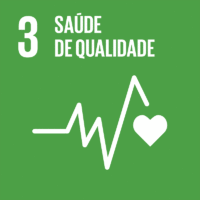Ciência_Iscte
Publicações
Descrição Detalhada da Publicação
Título Revista
European Journal of Pain
Ano (publicação definitiva)
2014
Língua
Inglês
País
Estados Unidos da América
Mais Informação
--
Web of Science®
Scopus
Google Scholar
Esta publicação não está indexada no Overton
Abstract/Resumo
BackgroundAlthough many studies have explored gender role expectations of pain behaviours in different cultures, only a few authors have tried to explore whether certain pains are more associated with the typical man or woman. Hence, this study aimed at exploring, among Portuguese laypeople and nurses, patterns of common pains more strongly associated with the typical man or woman, and their relationship with health-care training and personal pain experiences.
MethodsA total of 68 nurses (76% women) and 55 laypeople (62% women) were asked to identify, through free association, the most frequent common pains that people in general associate with the typical man and woman, respectively, and also to report their personal past pain experiences. A content analysis was used to categorize and quantify participants' responses. A multiple correspondence analysis was performed to identify gendered patterns of common pains, followed by a cluster analysis to classify participants according to their endorsed patterns.
ResultsFindings showed that while back and musculoskeletal pains' was the only pattern associated with the typical man, more differentiated patterns of pains were associated with the typical woman, namely (1) headaches; (2) abdominal, back and musculoskeletal pains; and (3) pains due to hormonal cycles, labour/puerperium and from the urinary/reproductive system. These representations were shared by laypeople and nurses and were only significantly associated with personal experiences of pains from the urinary/reproductive system.
ConclusionsThis study identified different gendered patterns of common pains, which may have important implications for (wo)men's pain experiences and how these are interpreted by others.
Agradecimentos/Acknowledgements
--
Palavras-chave
Classificação Fields of Science and Technology
- Medicina Básica - Ciências Médicas
- Medicina Clínica - Ciências Médicas
Contribuições para os Objetivos do Desenvolvimento Sustentável das Nações Unidas
Com o objetivo de aumentar a investigação direcionada para o cumprimento dos Objetivos do Desenvolvimento Sustentável para 2030 das Nações Unidas, é disponibilizada no Ciência_Iscte a possibilidade de associação, quando aplicável, dos artigos científicos aos Objetivos do Desenvolvimento Sustentável. Estes são os Objetivos do Desenvolvimento Sustentável identificados pelo(s) autor(es) para esta publicação. Para uma informação detalhada dos Objetivos do Desenvolvimento Sustentável, clique aqui.

 English
English



